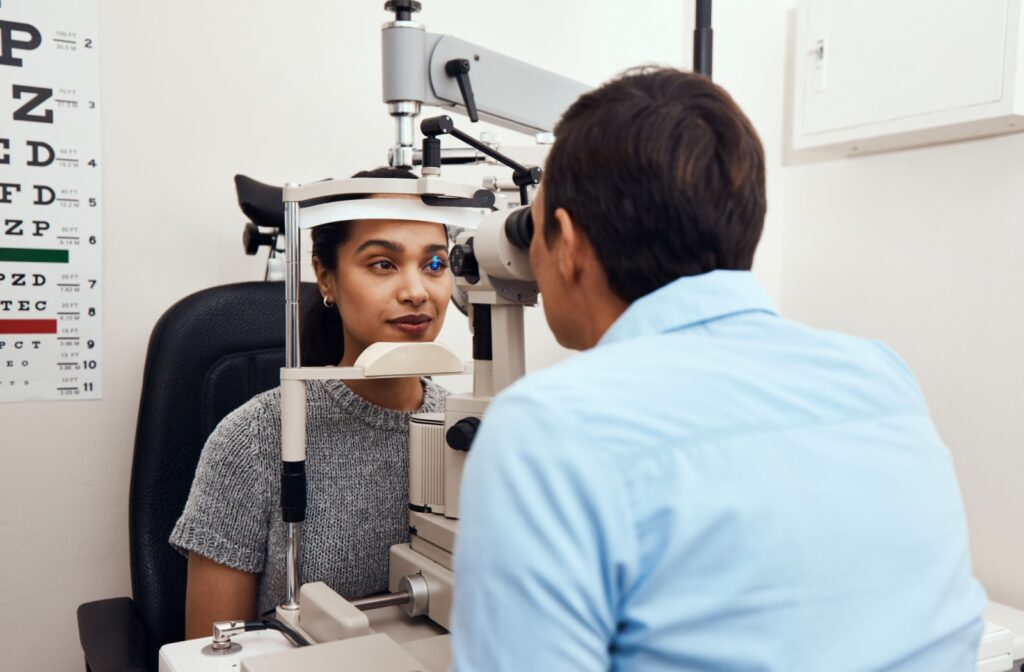If you’ve ever experienced persistent dry eyes, irritation, or redness that just won’t go away, you might be dealing with more than temporary discomfort. These symptoms could signal an ocular surface disease, which is a broad category of conditions affecting the front surface of your eye and the quality of your tear film.
While many people dismiss eye irritation as a minor inconvenience, these conditions can significantly impact your daily activities and quality of life if left untreated. The good news is that with proper knowledge and early intervention, most ocular surface diseases are highly manageable.
What Are Ocular Surface Diseases?
Ocular surface diseases encompass a group of conditions that affect the cornea, conjunctiva, eyelids, and tear film. These interconnected structures work together to keep your eyes comfortable, protected, and functioning optimally. When any component becomes compromised, it can trigger a cascade of symptoms that affect your entire visual system.
The ocular surface acts as your eye’s first line of defense against environmental irritants, bacteria, and debris. A healthy tear film provides essential lubrication, nutrients, and antimicrobial protection. When this delicate balance is disrupted, you may experience symptoms ranging from mild discomfort to severe vision problems.
Who Is at Risk for Ocular Surface Diseases?
Certain factors increase your likelihood of developing ocular surface diseases.
- Age plays a significant role, as tear production naturally decreases and eyelid function changes over time, but these conditions can affect anyone.
- Women face higher risks due to hormonal fluctuations during pregnancy, menopause, and while using certain medications.
- Environmental factors also contribute significantly. Dry climates, air-conditioned offices, or extended time outdoors in the wind or smoke can all trigger symptoms.
- Medical conditions like diabetes, autoimmune disorders, and thyroid problems increase susceptibility.
- Certain medications, including antihistamines, decongestants, and blood pressure medications, can reduce tear production.
- Contact lens wearers and individuals who’ve undergone eye surgery may also experience higher rates of ocular surface disease.
- Extensive screen time reduces blink rates, leading to inadequate tear distribution.
- Smoking, poor nutrition, and insufficient sleep can all compromise your eyes’ natural protective mechanisms.
How Are Ocular Surface Diseases Diagnosed?
Diagnosing ocular surface diseases requires a comprehensive eye examination that goes beyond a standard vision test. Your eye doctor typically begins with a detailed medical history, asking about your symptoms, lifestyle factors, medications, and any underlying health conditions.
The diagnostic process is collaborative. Your honest description of symptoms, their frequency, and what makes them better or worse provides crucial information for accurate diagnosis and effective treatment planning.
The physical examination includes several specialized tests. Your doctor can examine your eyelids, tear film quality, and the surface of your eye using magnification. They may perform tear production tests to measure the amount of moisture your eyes produce and evaluate how quickly your tears evaporate.
Advanced diagnostic tools can provide additional insights. Corneal topography maps the surface of your eye, while specialized imaging can reveal structural abnormalities.

Common Ocular Surface Diseases
Although they sound intense, ocular surface diseases aren’t typically an emergency. But they do often require an eye doctor’s intervention and monitoring to prevent vision loss or eye damage.
Dry Eye Disease
Dry eye disease is perhaps the most common ocular surface disease, affecting millions of people worldwide. It occurs when your eyes don’t produce enough tears or when tears evaporate too quickly. Symptoms include burning, stinging, scratchy sensations, excessive tearing, and blurred vision that improves with blinking.
Cataracts
Cataracts develop when the natural lens inside your eye becomes cloudy, creating vision problems that worsen over time. While not traditionally classified as an ocular surface disease, cataracts can significantly impact tear film stability and surface comfort.
Symptoms include blurry vision, increased sensitivity to light, difficulty seeing at night, and seeing halos around lights. Cataracts are prevalent, affecting most people over age 60 to some degree.
Glaucoma
Glaucoma represents a group of eye conditions that damage the optic nerve, often due to increased eye pressure. While primarily affecting internal eye structures, glaucoma medications can significantly impact the ocular surface. Many glaucoma eye drops contain preservatives that can cause surface irritation, dryness, and inflammation with long-term use.
Age-Related Macular Degeneration (AMD)
AMD affects the macula, the central portion of the retina responsible for sharp, detailed vision. Though it primarily impacts the back of the eye, AMD can influence overall eye health and comfort. Some AMD treatments may affect tear production or surface sensitivity, making comprehensive eye care essential for patients managing this condition.
Diabetes
Diabetes can cause significant changes throughout the eye, including the ocular surface. High blood sugar levels can affect tear composition and healing processes. People with diabetes often experience delayed wound healing and increased susceptibility to infections, making proper ocular surface management crucial for overall eye health.
Retinal Detachment
Retinal detachment is a serious condition where the retina separates from the back of the eye. While it primarily affects deeper eye structures, the condition and its treatments can impact ocular surface health. People may experience surface irritation following surgical repair, requiring specialized care to maintain comfort during recovery.
Importance of Early Detection
Early detection of ocular surface diseases can prevent minor issues from becoming major problems. Regular eye examinations can catch issues before they significantly impact your quality of life.
The interconnected nature of eye health means that addressing ocular surface issues can improve overall eye comfort and may help manage other eye conditions more effectively. For example, treating dry eye disease can reduce irritation from glaucoma medications and enhance treatment compliance and outcomes.
Take Care of Your Vision with Total Vision
Your eyes are working hard every day, and they deserve comprehensive, specialized care. Our expert team understands that ocular surface health is a key part of your overall eye wellness and quality of life. We use advanced diagnostic tools and personalized treatment approaches to address your unique needs.
Don’t let persistent eye discomfort become your new normal. Whether you’re experiencing occasional dryness or dealing with chronic irritation, early intervention can make all the difference. Contact one of our Total Vision locations to book a comprehensive eye examination today and discover how we can help you find solutions and achieve optimal eye health for lasting comfort.



